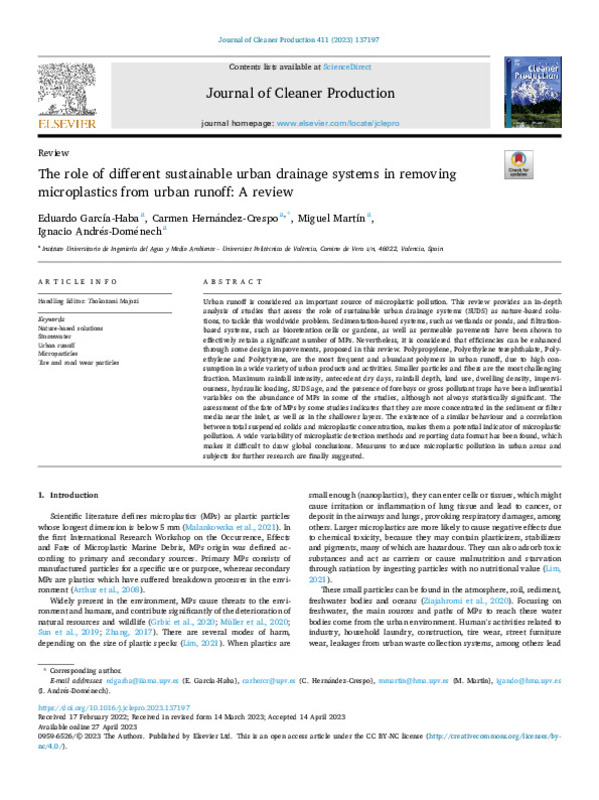JavaScript is disabled for your browser. Some features of this site may not work without it.
Buscar en RiuNet
Listar
Mi cuenta
Estadísticas
Ayuda RiuNet
Admin. UPV
The role of different sustainable urban drainage systems in removing microplastics from urban runoff: A review
Mostrar el registro completo del ítem
García-Haba, E.; Hernández Crespo, C.; Martín Monerris, M.; Andrés-Doménech, I. (2023). The role of different sustainable urban drainage systems in removing microplastics from urban runoff: A review. Journal of Cleaner Production. 411:1-13. https://doi.org/10.1016/j.jclepro.2023.137197
Por favor, use este identificador para citar o enlazar este ítem: http://hdl.handle.net/10251/200987
Ficheros en el ítem
Metadatos del ítem
| Título: | The role of different sustainable urban drainage systems in removing microplastics from urban runoff: A review | |
| Autor: | ||
| Entidad UPV: |
|
|
| Fecha difusión: |
|
|
| Resumen: |
[EN] Urban runoff is considered an important source of microplastic pollution. This review provides an in-depth analysis of studies that assess the role of sustainable urban drainage systems (SUDS) as nature-based solutions, ...[+]
|
|
| Palabras clave: |
|
|
| Derechos de uso: | Reconocimiento - No comercial (by-nc) | |
| Fuente: |
|
|
| DOI: |
|
|
| Editorial: |
|
|
| Versión del editor: | https://doi.org/10.1016/j.jclepro.2023.137197 | |
| Código del Proyecto: |
|
|
| Agradecimientos: |
This research has been developed within the ENGODRAIN (Ref. RTI2018-094217-B-C31) and SUDSLong-VLC (Ref. PID2021-122946OB-C32) projects, both funded by MCIN/AEI/10.13039/501100011033/and "ERDF Away of making Europe". Eduardo ...[+]
|
|
| Tipo: |
|









